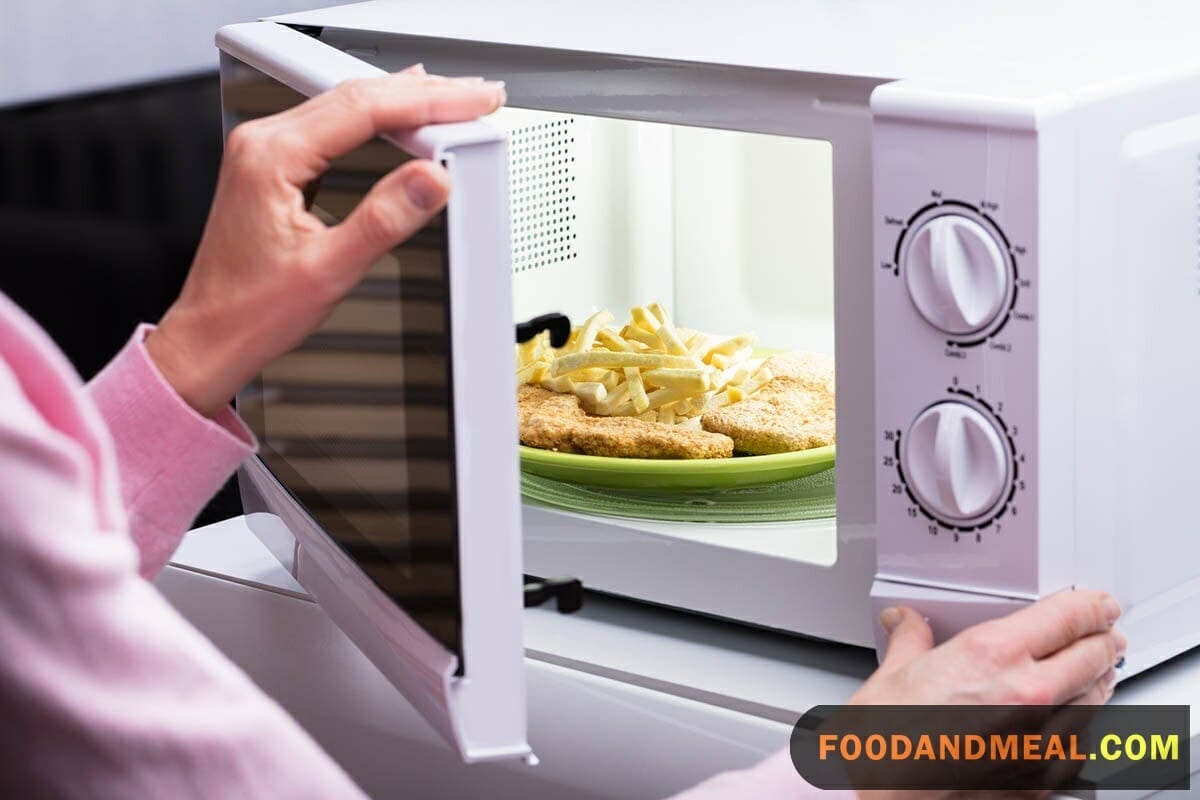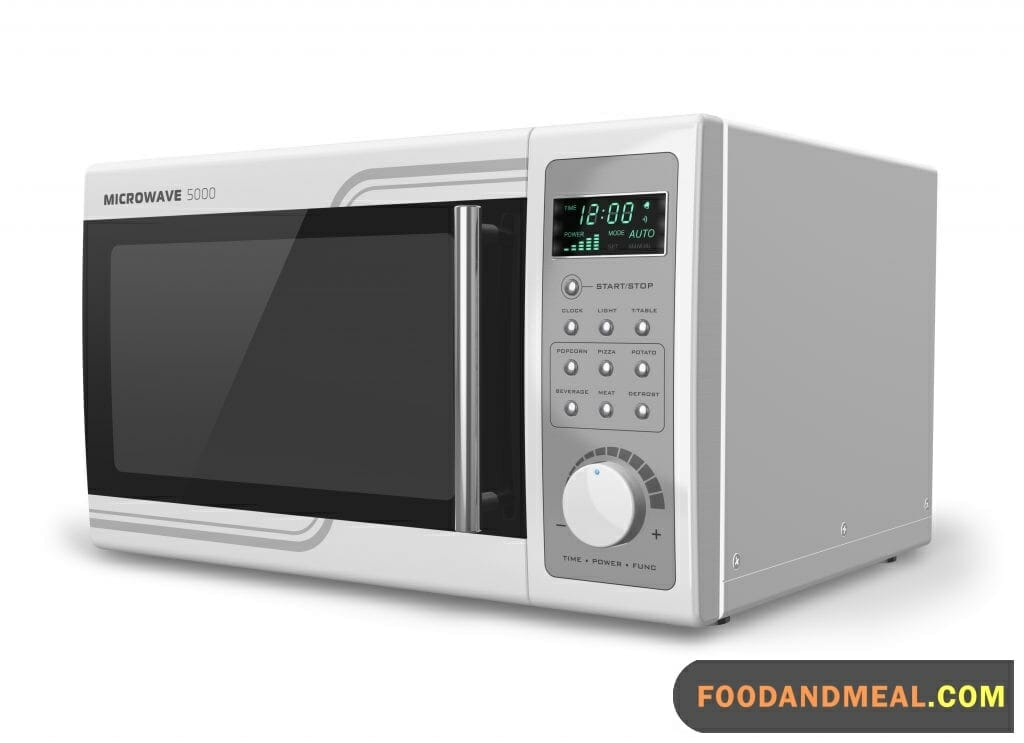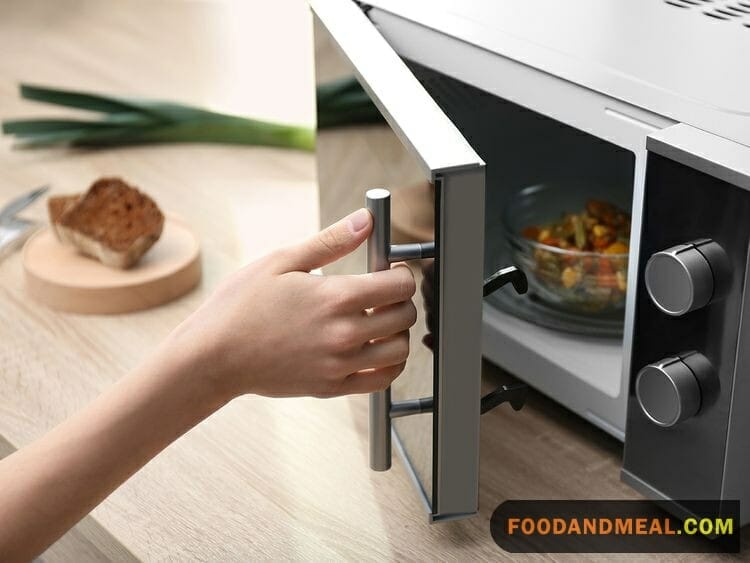Microwaves and ovens rank among the most commonly used methods for cooking food, each fulfilling distinct roles in the culinary realm. Microwaves excel at reheating leftover meals, whereas ovens shine when it comes to baking bread and preparing dishes that demand extended cooking periods.
This article of Food and Meal aims to delve into the appropriate durations for microwaving or baking specific items to ensure they are thoroughly cooked and not left underdone.
5 minutes in the microwaves is how long in the ovens?
By and large, microwaves have convincingly demonstrated the ability to cook food in approximately 75% less time than conventional ovens and other standard cooking appliances.
In general, food cooked in a microwave will cook faster than in a conventional oven. A rule of thumb is that cooking times in a microwave are roughly one-fourth to one-fifth of the time required in a conventional oven. This is a very rough estimate and can vary depending on the specific food item, quantity, and wattage of your microwave.

If you’re looking to convert 5 minutes of microwave cooking time to an oven, you might start by trying 20 to 25 minutes in a preheated conventional oven. However, keep in mind that this is just an approximation and you’ll need to monitor the food closely as it cooks, as oven temperatures can vary and some adjustments might be necessary.
For the most accurate results, it’s recommended to consult a specific recipe or cooking guidelines for the particular dish you’re preparing.
How do you convert microwave time to baking?
As mentioned earlier, the typical cooking duration in a microwave is a quarter (1/4) of that in a regular oven. With this in mind, when converting microwave timing to baking duration:
Find out the cooking/baking time of your recipe
The initial step is to identify the recommended cooking time in your recipe.
This information is commonly found on the packaging or label of the food product. If you can’t locate the stated time on the packaging, you can refer to your cookbook or search online.

Multiply the cooking duration by 4
Once you’ve established the microwave cooking time, calculate the baking time by multiplying the microwave time by 4.
For example, if the microwave cooking time is 10 minutes, the corresponding baking time would be 10 * 4, resulting in 40 minutes.
To grasp the significant time contrast between these two methods, it’s crucial to comprehend how each cooking process operates.
How do microwaves operate?
Microwaves function by emitting energy waves that prompt water molecules to oscillate. This oscillation generates heat, which in turn cooks the food.
Currently, there are three distinct types of microwave ovens available:
| Solo Microwaves | These microwaves are the most basic and are primarily suitable for reheating and defrosting food. |
| Grill Microwaves | As the name implies, grill microwaves can handle the fundamental microwave tasks of reheating and defrosting. However, they go beyond these functions by enabling grilling, roasting, or searing of food items. |
| Convection Microwaves | These microwaves represent the pinnacle of advancement and versatility. They encompass all the capabilities of grill and solo microwaves, while also encompassing the ability to bake or brown food. |
If your intentions involve baking or using your microwave as an oven, the convection microwave is the model you should be considering.
What is the functioning of Ovens?
An oven functions as a sealed enclosure designed to utilize heat for the purpose of cooking food.
The source of heat can vary, with the most frequent options being electrical coils or gas burners. To ensure uniform cooking, fans distribute the heat uniformly within the oven chamber. Ovens can be categorized into two primary types: convection and conventional.
Convection ovens employ air circulation to evenly distribute the heat within the chamber, whereas conventional ovens rely on radiant heat. Both these types of ovens can be either powered by gas or electricity.

Can I substitute an oven for a microwave?
Is it possible to swap out an oven for a microwave? The idea might be quite appealing – after all, who wants to wait much longer for a dish to be ready when you could cut down the time to just a quarter?
To address your query, the answer is yes, you can indeed replace an oven with a microwave, but with a significant caveat.
The substitution is feasible under the condition that the microwave in question is a convection microwave and possesses two distinct modes:
- Execute the typical microwave tasks of heating, reheating, and cooking food.
- Engage the convection mode to bake, roast, and broil, utilizing both the heating element and the fan to ensure even heat distribution throughout the appliance.
However, it’s important to note that if you have a solo or grill microwave, it’s not feasible to use it as a substitute for an oven.
What can I use instead of a microwave?
What if you’re without a microwave? That doesn’t imply you’re resigned to consuming cold leftovers or takeout meals.
Plenty of alternatives can perform just as admirably as the mighty microwave. While it’s undoubtedly a kitchen staple for many, not having one doesn’t mean you should go to great lengths to acquire it. Here are several microwave alternatives that you likely already have at your disposal in the kitchen. Put them to use!
- Oven: Did you know you can actually reheat food in the oven? In fact, for reheating most dishes, the oven is often considered a superior choice to the microwave, although it might not be as energy-efficient.
- Stovetop: If you weren’t aware of this, you haven’t fully explored the potential of your stovetop.
- Crock Pots: An added advantage of using a crockpot as a microwave alternative is that you don’t even need to be present while reheating.
- Air Fryers: Yes, you can employ an air fryer to reheat leftover food as well. Simply set it to a specific temperature and witness its magic unfold. It’s especially great for maintaining crispiness.
- Toaster Ovens: Indeed, everything you can cook using a toaster oven can also be reheated in one.
Tips for Converting Microwave Time to Baking
Whether you find yourself confined to home with only a microwave or are contemplating substituting your oven with a microwave, grasping the various microwave types is crucial.
If your intentions encompass baking or utilizing your microwave as an oven, a convection microwave is essential.
Much like convection ovens, convection microwaves employ the circulation of hot air within the chamber, enabling you to achieve well-baked dishes in a comparatively shorter timeframe.
Prepare your baking utensils.
Begin by prepping your baking tools to ensure optimal outcomes and prevent oven-related mishaps. You’ll require a cookie sheet or pie plate, which can be greased using butter or shortening. For added convenience, you might consider lining it with parchment paper, if available, to prevent food from sticking and simplify cleanup. Make certain that the size and depth of your pan suit the item you’re baking.
When employing a pie plate, ensure that the crust is thoroughly baked before introducing the filling. For cookie baking, preheat the oven to 350°F and position the rack at the oven’s center. Allow cookies to bake for around 8-10 minutes (adjust as desired for crispiness). When preparing cakes or other baked items, adapt temperature and duration accordingly.
Adjust time based on size and shape.
For most recipes, time conversion depends on the dimensions of your baking vessel. Many baking dishes display their dimensions, but if not, here’s a rapid way to estimate the surface area:
1. Find a plate that fits within your microwave and measure its diameter (length across one side).
2. Multiply this measurement by 3.14 (pi), approximately equal to 3.15. This calculation offers an accurate representation of the space between two microwave oven walls when viewed from above, providing a sense of their separation.
3. If you lack suitable plates that fit your microwave’s dimensions, you can use a piece of paper shaped like an oval with dimensions matching your dish. This should provide a precise estimation, given the relatively consistent size and shape of microwaves.
Determine wattage.
The conversion of microwave time to baking is simplified by establishing the wattage of your microwave oven. Refer to the back of the oven or its instruction manual for this information, typically provided upon purchase.
If you find yourself at home with only a microwave or are contemplating swapping your oven for a microwave, it’s crucial to grasp the variety of microwave options at your disposal. Should you aspire to engage in baking or utilize your microwave as an oven, a convection microwave is essential. Similar to convection ovens, convection microwaves employ the circulation of hot air within the chamber, enabling you to achieve excellently baked dishes in a significantly shorter timeframe.

23 December ·
Cooking Conundrums: The Microwave vs. Oven Dilemma
By Food And Meal
Welcome to our informative segment where Food And Meal will be unraveling the mysteries of microwave cooking times and their counterparts in conventional ovens. Have you ever wondered how long it takes to cook something in the oven compared to the microwave? Well, today we're here to shed light on this topic and help you navigate the world of cooking appliances.
FAQs
Here are some frequently asked questions (FAQs) about converting microwave cooking time to oven cooking time:
1. How can I convert microwave cooking time to oven cooking time?
- Answer: Microwave cooking times are generally shorter than oven times due to the different heating methods. As a general rule, you can multiply the microwave time by approximately 4 to get an equivalent oven time.
2. Why is microwave cooking time shorter than oven cooking time?
- Answer: Microwaves use electromagnetic waves to directly heat the food, while ovens rely on convection and conduction. Microwave cooking is more efficient in terms of speed, hence the shorter cooking times.
3. Can I use the same temperature settings for the oven as for the microwave?
- Answer: Not necessarily. While you can use the converted time, the temperature settings may differ. Refer to your recipe or cooking guidelines for the recommended oven temperature.
4. Is the 4x conversion rule accurate for all types of food?
- Answer: The 4x rule is a general guideline. It works well for reheating leftovers and cooking certain dishes but may vary based on the type of food and its density.
5. Can I use a microwave-safe dish in the oven for the converted time?
- Answer: Not all microwave-safe dishes are suitable for oven use. Check the manufacturer’s recommendations on the dish to ensure it’s safe for oven temperatures.
6. Do I need to make adjustments for the type of oven (conventional vs. convection)?
- Answer: Yes, convection ovens circulate hot air, cooking food faster than conventional ovens. You may need to reduce the converted time or adjust the temperature accordingly.
7. Are there foods that do not convert well from microwave to oven?
- Answer: Delicate items like soufflés or certain baked goods may not convert perfectly. It’s essential to monitor the food during cooking to avoid overcooking.
8. Can I use the same cooking times for every microwave-to-oven conversion?
- Answer: No, cooking times can vary based on factors such as the wattage of the microwave, the size of the food, and the type of dish. Use the 4x rule as a starting point and adjust as needed.
9. What should I do if my oven-cooked food seems undercooked after the converted time?
- Answer: Check for doneness using standard methods like inserting a thermometer into the thickest part of the food. If needed, continue cooking in short increments until it reaches the desired doneness.
10. Can I convert microwave popcorn cooking time to oven time using the 4x rule?
- Answer: Microwave popcorn is specifically designed for microwave cooking and may not convert well to the oven. Follow the manufacturer’s instructions for oven alternatives.

